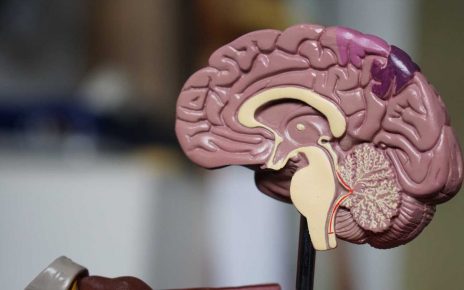In a recent study posted to the medRxiv* pre-print server, researchers investigated the association between genetic predisposition to venous thromboembolism (VTE) and increased risk of thrombosis post coronavirus disease 2019 (COVID-19) vaccination.

Venous thromboembolism (VTE) involves deep vein thrombosis and pulmonary embolism and predominantly affects older individuals. VTE affects nearly 10 million people globally every year and leads to considerable morbidity and mortality. Although studies have shown that COVID-19 vaccination is linked to a higher risk of VTE, it is not clear if a genetic predisposition to VTE plays a role in the increased risk of thrombosis post-vaccination.
About the study
In the current study, the researchers used UK Biobank (UKBB) data containing information related to in-depth genotyping data and associated vaccination and health outcomes to generate a polygenic risk score (PRS). They used 299 genetic variants identified in a previous study on large genome-wide association.
The UK Biobank is a prospective cohort with more than 500,000 individuals from England (89%), Scotland (4%), and Wales (7%) between 2006 and 2010. The age of these individuals at baseline enrolment was in the range of 40 to 69 years. The Biobank data comprised comprehensive information about demographics, lifestyle factors, socioeconomics, medical history, and physical metrics collected using questionnaires and standardized measurements.
The team prospectively evaluated associations between incident VTE and PRS post first and second doses of COVID-19 vaccination. They performed sensitivity analyses stratified based on vaccine type (mRNA or adenovirus vaccine) and used two historical cohorts that were unvaccinated. The hazard ratios (HR) for PRS-VTE associations were estimated using Cox models.
In the vaccinated cohorts, all UKBB participants from England who had received at least one dose of ChAdOx1 or BNT162b2 COVID-19 vaccines between December 2, 2020, and September 31, 2021, were included. The team followed up the eligible participants from the vaccination date to outcome, death, or the end of the follow-up period at 28 and 90 days, whichever happened first. Participants from Scotland or Wales were not included in this cohort because of the lack of vaccination records at the time of this study.
Results
A total of 359,310 individuals received a single COVID-19 vaccine dose, of which 44.6% or 160,327 were males, and the mean age was 69.05 years on the vaccination date. On 28- and 90-day follow up after first-dose vaccination, 88 and 299 patients developed VTE, respectively, which was equivalent to a 0.88 and 0.92 incidence rate per 100,000 person-days. This association between VTE and PRS slightly decreased after the second dose vaccination in the 28- and 90-days follow-up period.
The results showed that the PRS was significantly associated with an increased risk of VTE. The team found similar associations in the two vaccine dose cohort and the historical unvaccinated cohorts after stratification by vaccine type. Of the 221,875 vaccine recipients whose vaccine-type information was available, 172 83,816 received BNT162b2 and 138,059 received ChAdOx1. Similar PRS-VTE associations were observed across each vaccine dose and follow-up period. HR ranged between 1.24 and 1.63 in the ChAdOx1 cohort and between 1.20 and 1.38 in the BNT162b2 cohort.
Interestingly, the VTE incidence rates in the BNT162b2 cohort were nearly twice as high as the incidence rates in the ChAdOx1 cohort. This was expected because the BNT162b2 vaccine was approved first in the UK and was prioritized among the older, more vulnerable populations.
Conclusions
The study results support several conclusions. First, the data showed that genetic susceptibility to VTE is a risk factor for VTE following COVID-19 vaccination. Second, this genetic susceptibility was independent of conventional risk factors including obesity, old age, and comorbidity, as evidenced by the lack of associations between the baseline characteristics and PRS.
Third, data from the historical comparison arm suggests that clinically significant interactions are unlikely between the genetic background of individuals and COVID-19 vaccination. This has specific implications for hereditary VTE patients with predisposing traits who are vaccine-hesitant due to concerns related to vaccine safety signals. Fourth, using the genetic score, the team found that 5% of the participants had an over two-fold higher VTE risk, which is of great public health relevance as it can inform intervention policies in the vaccinated population.
To summarize, the study findings show that the genetic determinants of developing VTE following COVID-19 vaccination are similar to those found in historical data. This indicates that post-COVID-19 vaccine VTE has a similar etiology as conventional VTE, at the population level. In addition, the observed associations between PRS and VTE were equivalent for mRNA and adenovirus-based COVID-19 vaccines.
*Important notice
medRxiv publishes preliminary scientific reports that are not peer-reviewed and, therefore, should not be regarded as conclusive, guide clinical practice/health-related behavior, or treated as established information.
- Junqing Xie, Albert Prats-Uribe, Maria Gordillo Maranon, Victoria Y. Strauss, Dipender Gill, Daniel Prieto-Alhambra. (2022). Genetic risk and incident venous thromboembolism in middle-aged and older adults following COVID-19 vaccination. medRxiv. doi: https://doi.org/10.1101/2022.04.14.22273865 https://www.medrxiv.org/content/10.1101/2022.04.14.22273865v1
Posted in: Medical Science News | Medical Research News | Disease/Infection News
Tags: Adenovirus, Coronavirus, Coronavirus Disease COVID-19, covid-19, Deep Vein Thrombosis, Embolism, Genetic, Genome, Genotyping, Mortality, Obesity, Public Health, Pulmonary Embolism, Thromboembolism, Thrombosis, UK Biobank, Vaccine, Venous Thromboembolism

Written by
Pooja Toshniwal Paharia
Dr. based clinical-radiological diagnosis and management of oral lesions and conditions and associated maxillofacial disorders.
Source: Read Full Article



